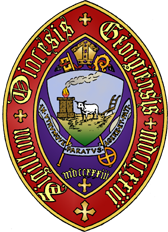In fall of 1864, the crushing news of the Fall of Atlanta to the massive assault of General Sherman’s Federal troops was just three weeks old. Sherman’s devastating March to the Sea was underway. The weight of this devastation is revealed in the change of name for our Episcopal church in Americus. In the 1850s, Bishop Stephen Elliott sought to found St. John’s Episcopal Church in Americus with nine communicants. That church start failed.
When the same bishop founded a church in Americus six years later, he selected the name Calvary, reflecting the suffering he had seen up close.
 Bishop Stephen Elliott had visited the Army of the West back in 1863, when they were encamped at Shelbyville, Tennessee. He confirmed ten in a liturgy held at the Presbyterian Church. Elliott wrote “The attention of this large body of soldiers was earnest and like men who were thoughtful about their souls. It gave hope for the future of both the army and the church.”
Bishop Stephen Elliott had visited the Army of the West back in 1863, when they were encamped at Shelbyville, Tennessee. He confirmed ten in a liturgy held at the Presbyterian Church. Elliott wrote “The attention of this large body of soldiers was earnest and like men who were thoughtful about their souls. It gave hope for the future of both the army and the church.”
The fortunes of war turned. The fight came to Georgia. Bishop Elliott again visited the troops as close as he could get to the battle lines. In the summer of 1864, his friend and fellow bishop, Leonidas Polk, died by canon shot when he and other generals were scouting Federal troop positions near Marietta. We get a glimpse of this time in Bishop Elliott’s Diocesan Convention Address of 1866, given eleven months after he founded Calvary which he began saying:
“Brethren of the Clergy and Laity: Another eventful period has passed away—“a period of darkness and of gloominess, of clouds and thick darkness”—during which our Lord has moved among us in awful mystery and in seeming wrath. The tumultuous tide of events has rolled very contrary to our wishes and our anticipations; has been freighted with a heavy burden of sorrow, and suffering, and death, and has brought us together this day with trouble all around us, with cruel anxieties pressing upon us, with grave perplexities entangling us, with very little joy or hope save such as may spring from a divine source.”
 With heavy loss of life and destruction close at hand, the Episcopal Church in Americus was named Calvary. As Christians, we have no stronger image to summon in times of darkness. For though Jesus could cry out from the cross, “My God, My God, why have you forsaken me?” We can see the Civil War differently from our first bishop and yet share his conviction that nothing can separate us from the love of God that is found in Christ Jesus.
With heavy loss of life and destruction close at hand, the Episcopal Church in Americus was named Calvary. As Christians, we have no stronger image to summon in times of darkness. For though Jesus could cry out from the cross, “My God, My God, why have you forsaken me?” We can see the Civil War differently from our first bishop and yet share his conviction that nothing can separate us from the love of God that is found in Christ Jesus.
Bishop Elliott’s choice of Calvary would have felt apt to the congregation. The twenty-one communicates were very aware of the Confederate Hospital in Americus where some served. The most terrible of Prisoner of War camps was just thirteen miles away in Andersonville. Those who knew him said the loss of the Confederacy devastated Bishop Elliott. He died suddenly on December 21, 1866, on returning home from what proved to be his final episcopal visitation.
The pictures above show part of the Battle for Atlanta and Andersonville Prison, just north of Americus.
